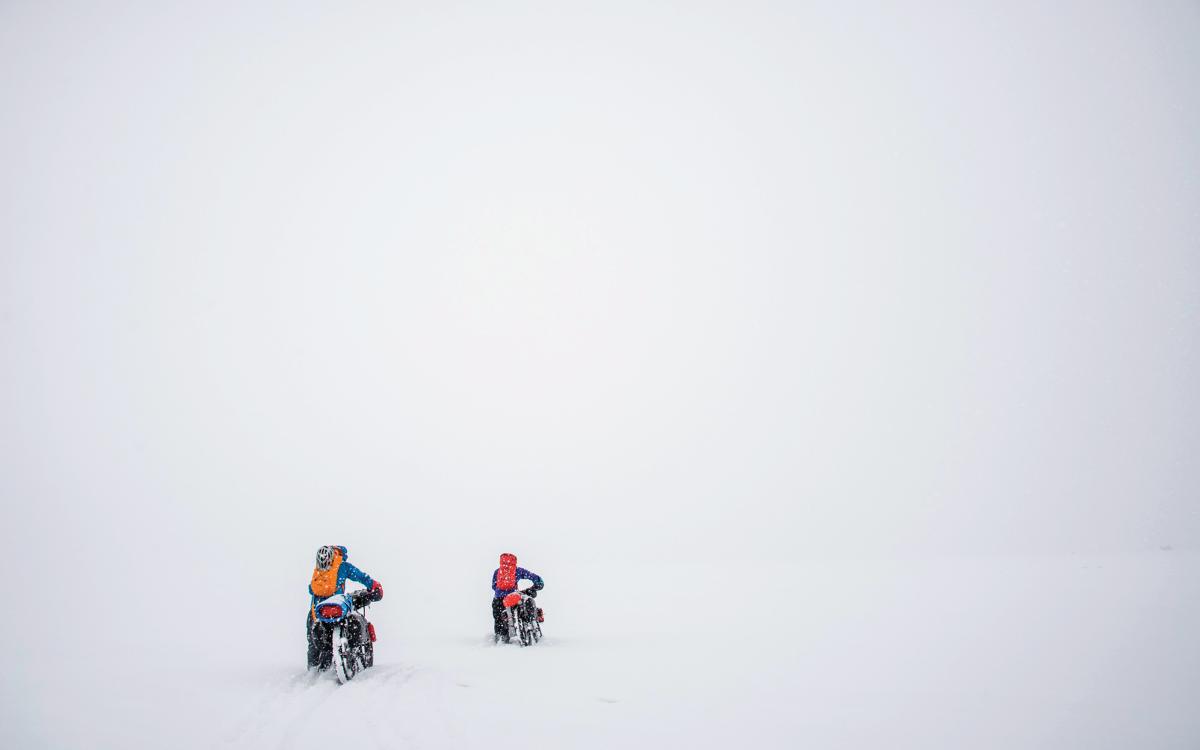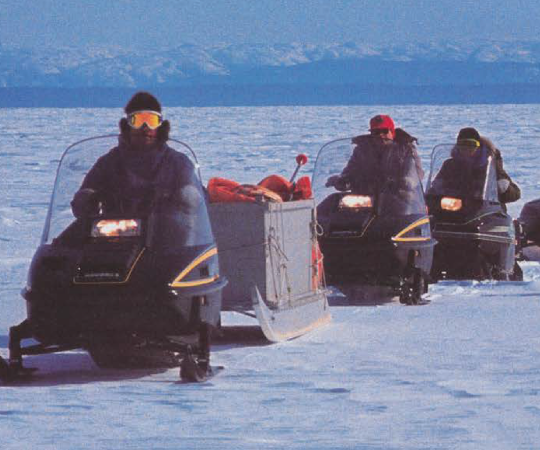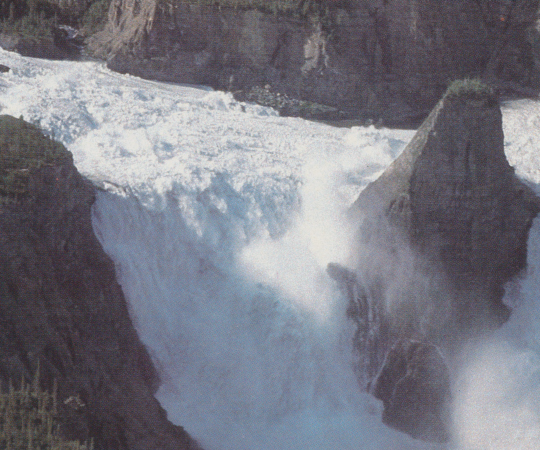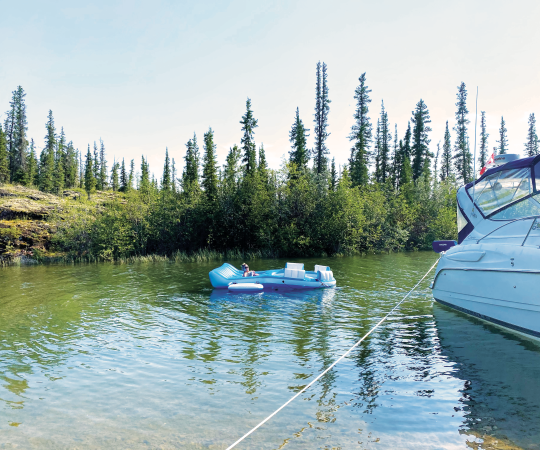The outline of the massive granite peaks over the valley could barely be made out against the white of the sky. The frozen river beneath the three-man crew was caked in snow. When the icy winds whipped up around them, they struggled to see more than a few feet ahead.
On a clear day, towering Mount Asgard and Mount Thor would have provided a stunning backdrop for their epic ride. But due to the snow storm, Kari Medig, Carl Moriarty and Alex Frankel were only concerned with getting to the nearest shelter.
“We ended up kind of pushing our bikes a lot for the first few days,” says Medig, originally from northern B.C. “We were wondering, ‘Oh my God, is this the right tool for the job?’”
Medig isn’t a newbie when it comes to “bikepacking” (backpacking, but on a bike). Medig had previously hiked through Baffin Island’s Auyuittuq National Park in 2010, and that inspired him to return—this time using a different mode of transportation. In 2015, he and his intrepid friends Moriarty and Frankel began planning the trip for the following April.
The expectation of unpredictable weather on Nunavut’s 97-kilometre Akshayuk Pass meant a lot of preparing beforehand. They packed as lightly as possible, even snapping off the handles of their toothbrushes to save room. The crew ensured their fat bikes—made with a specialized light-weight carbon frame and complete with studded tires—were in perfect operating condition, because they couldn’t carry spare parts. If one thing broke, they would be pushing their bikes the rest of the trip.
“The learning curve, I’d say, was knowing what’s rideable and what’s not,” says Medig. “ With skis, there’s always a way; whereas, with a bike, if the snow becomes too deep, that’s it. You can’t ride at all. It needs very specific conditions to work.” Without a sturdy surface, you can’t support the weight of the vehicle—and it just sinks.
“It’s definitely not a trip people should do unless they have at least a little experience, in terms of being in the wild for extended periods of time,” he says. Nonetheless, he called the experience “magical.”
“The Akshayuk Pass has been used by the Inuit for centuries,” Medig says. “It’s very remote and it sends you through some of the most amazing mountains in Canada.”
And though it’s on the bucket-list of most serious hikers, the national park is seldom travelled by bike. Medig knew of only one other person who had cycled the pass before he embarked on the adventure.
But Medig clearly enjoys exploring the world on two wheels and proving that even the wildest places in the North can accommodate riders—provided they’re prepared. He’s one of many mountain bike and cycling enthusiasts across the territory blazing new trails and encouraging others to follow.
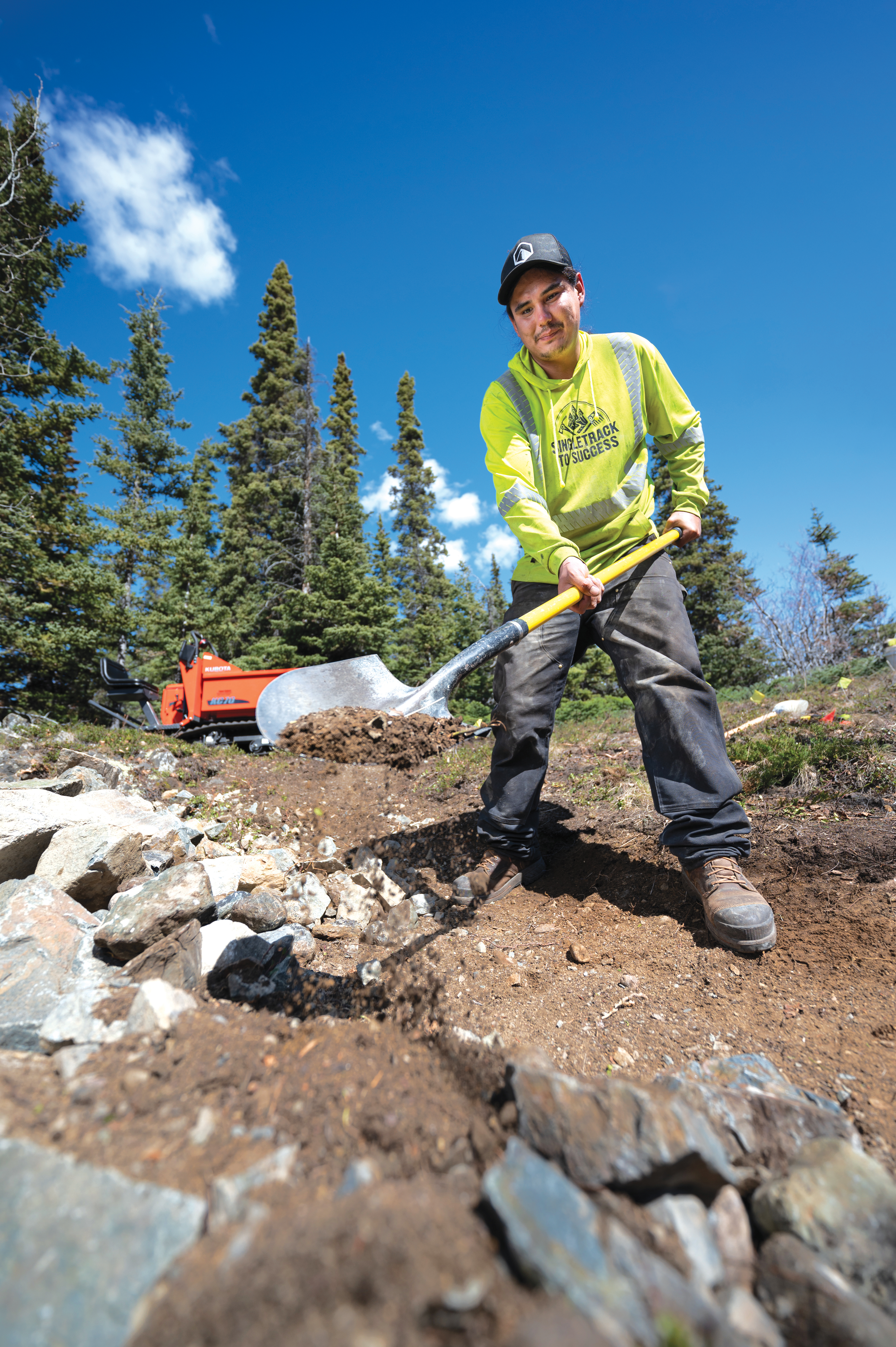
Shane Wally spends much of his spring and summer in Carcross forests. He notices the breaks in between the trees and where the roots sprawl out, the best viewpoints between bushes, how firm the soil is and where wildlife has made its home. He kneels down and looks at how water runs over the ground when it rains. He thinks about what the land has been used for in the past. He keeps an eye out for colourful fabric flags wrapped around trees and rocks, signifying that local First Nations have held sacred ceremonies in the area.
“When we see that, we let everybody know we can’t go in there. We can’t bother anything,” he says.
It’s Wally’s job to envision where the best mountain biking trails will go throughout much of the Yukon. It all began when he got his first mountain bike at 16, back when there were few trails around his hometown of Carcross—a community of 300, an hour’s drive south of Whitehorse. When he heard trails were going to be built nearby, he signed up to help, joining the organization now known as Singletrack to Success. Today, he’s one of the leaders of the non-profit, building world-class bike trails and showing youth how to do it.
Part of that job is teaching young people to be aware of the land’s history and its geology. They take into consideration water damage and how rain and snow melt can erode trails. They are taught how to work around permafrost. They also learn how retreating glaciers from thousands of years ago changed the landscape, leaving ridges throughout. (Places like Carmacks and Dawson escaped glaciation, which means the ground is softer and easier to manipulate for trail-builders.)
But Wally says it’s most important to teach the kids respect for the land.
“It’s quite interesting to think about how my [Tlingit] ancestors back in the day cleaned up their trails,” he says. “They would notice something that was different, and they wanted to figure out what was making it different and try to help the forest make it back to where it was.”
That care and attention has helped to make Carcross famous for its mountain bike trails. In fact, its Mountain Hero Trail was dubbed an “epic ride” by the International Mountain Bicycling Association and was added to the world’s top 10 mountain bike trails by Mountain Bike World Wide.
“It’s a pretty nice trail that goes right over Montana Mountain and then right through Carcross itself. You bike all the way up the access road to the trail and then you ride the trail all the way down towards Windy Arm Lake,” he says. “It’s just a really great scenic hiking and biking trail.”
Building trails is therapeutic, Wally says, while riding down the hills offers its own kind of exhilaration. “I just focus on keeping my head up, looking forward all the time and enjoying the ride,” he says. “I always love being outdoors.”
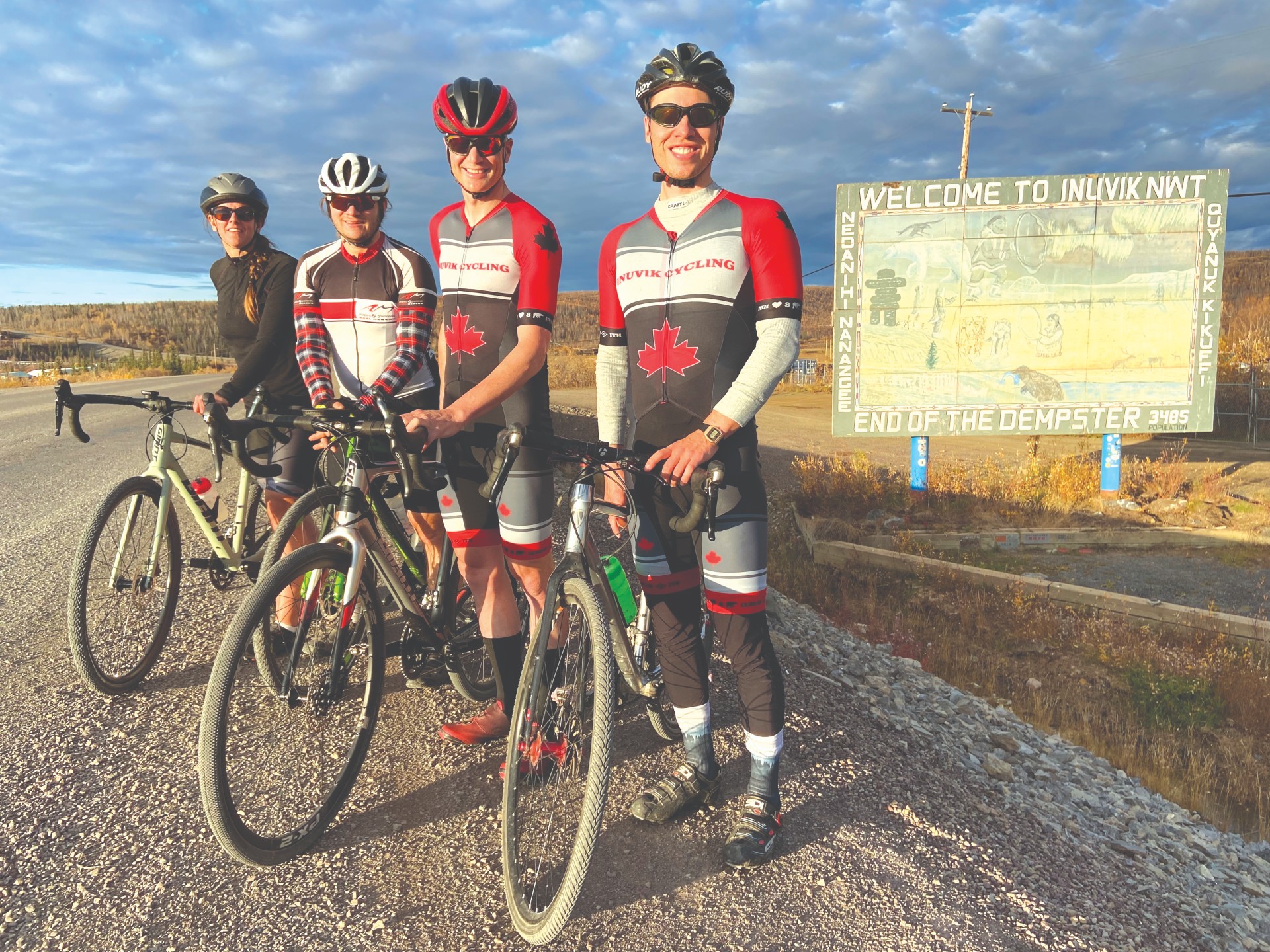
Chris Bruckner may not be building trails in Inuvik, but he is doing his part to build a community of cyclists in the Mackenzie Delta hub. An avid cyclist for most of his life, he noticed there weren’t many organized events after moving north from Victoria in 2020, despite the many unique routes snaking through—and out of—town.
Bruckner soon took over the Inuvik Cycling Club, which consisted of four members. Now, it has more than 60 and hosts regular events, from the Aklavik Icebreaker (which goes over the ice road from Inuvik to Aklavik) to the Tuk Time Trial Gravel Gran Fondo (which starts in Inuvik and heads to Tuktoyaktuk).
The latter leads cyclists over rolling hills and through the disappearing treeline. Nearing Tuktoyaktuk, pingos start popping up in the background. “It’s 150 kilometres of challenging terrain and then, of course, you’re here at the Arctic Ocean,” says Bruckner. “It’s quite a picturesque challenge.”
The group also has weekly winter and summer rides down ice roads or around the community. “They’re not all epic strenuous events,” Bruckner says. “We even had a small coffee ride last year that was about 10 kilometres. We just went to a local campground and had coffee and sat around and chatted.”
Bruckner admits it’s less busy in winter, and he understands why. He had to adapt to a fat bike for winter after moving North. “I have ridden in the winter elsewhere in Canada, but the one thing that caught me off guard—something that I had to learn my first season here—is riding in the extreme cold,” Bruckner says. He’s had issues with his hydraulic brakes and bicycle grease getting so thick in the cold it causes drivetrain failure. “It’s been a work in progress, and I’ve had to take stuff apart and re-grease them and rework them so the bike will function at extreme cold temperatures.”
That struggle has only made cycling all the more gratifying for Bruckner. “We have some of the most beautiful and diverse landscapes here.”
The challenge is also what made Medig’s 2016 adventure so powerful and rewarding.
“The best part is always the time away and just being one with the land,” Medig says. “It’s such a mesmerizing landscape and also it’s like the line between survival and not seems very thin. I’m always so blown away by how people have thrived on that landscape for centuries.”
After the first three days, the storm finally subsided. The wind had swept the snow off the ice, making it a much easier ride. Medig, Moriarty and Frankel hopped back on their fat bikes to make up for time lost. Now they were actually able to enjoy the scenic fiords and valley, splashing through meltwater that clearly reflected the peaks so high above them.
All in all, a perfect day on two wheels.

